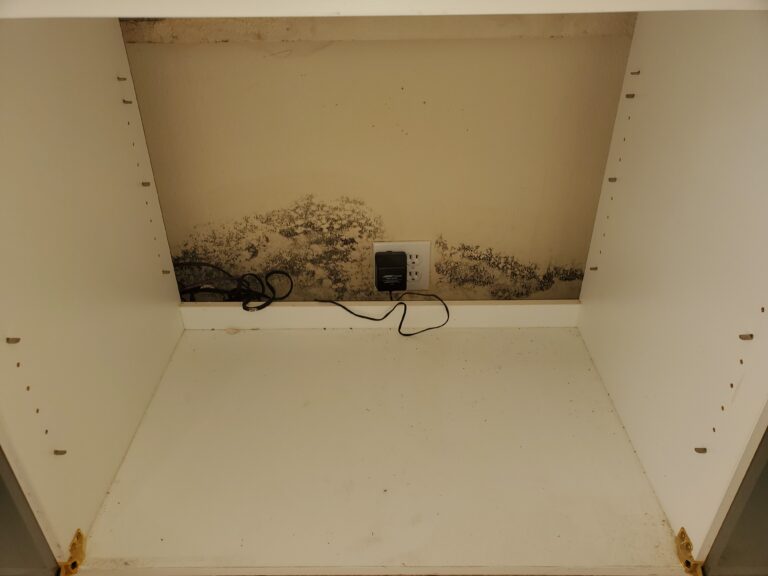Cladosporium Mold

Cladosporium mold is a common household and environmental fungus recognized by its dark green or black coloration and velvety texture. It thrives in areas with high moisture levels, making bathrooms, basements, and areas prone to water leaks ideal environments for its growth. Understanding Cladosporium mold is essential for maintaining a healthy living space, as prolonged exposure can lead to various health issues and structural damages.
What is Cladosporium Mold?
Cladosporium is one of the most prevalent mold species found both indoors and outdoors. It belongs to a large genus of fungi with over 700 known species. While many Cladosporium species are harmless, some can cause allergic reactions and respiratory issues in sensitive individuals.
Characteristics of Cladosporium Mold
- Color: Typically dark green or black.
- Texture: Velvety to powdery surface.
- Growth Patterns: Forms circular colonies with distinct edges.
- Spore Production: Releases spores readily into the air, facilitating widespread distribution.
Common Areas for Cladosporium Mold Growth
Cladosporium mold favors environments with high humidity and moisture. Identifying these areas can help in early detection and prevention of mold proliferation.
- Bathrooms: Shower areas and sinks are prone to moisture accumulation.
- Crawl Spaces: Often damp and poorly ventilated, making them hotspots for mold growth.
- Kitchens: Areas around sinks and refrigerators can harbor moisture.
- Attics: Poor ventilation can lead to condensation and mold issues.
- Windowsills: Condensation on windows provides a moist environment for mold.
Factors Contributing to Growth
- High Humidity Levels: Sustained moisture creates ideal conditions.
- Poor Ventilation: Lack of airflow traps moisture, promoting mold growth.
- Water Leaks: Leaky roofs, pipes, or windows introduce excess moisture.
- Organic Materials: Mold feeds on materials like wood, paper, and fabric.
Health Impacts of Cladosporium Mold
Exposure to Cladosporium mold can have various health implications, especially for individuals with allergies, asthma, or compromised immune systems.
Common Health Symptoms
- Allergic Reactions: Sneezing, runny nose, red eyes, and skin rashes.
- Respiratory Issues: Coughing, wheezing, and difficulty breathing.
- Asthma Exacerbation: Increased frequency and severity of asthma attacks.
- Eye Irritation: Redness and itching caused by airborne spores..
Vulnerable Groups
- Children: Developing respiratory systems make them more susceptible.
- Elderly: Age-related immune decline increases risk.
- Individuals with Pre-existing Conditions: Chronic respiratory diseases heighten sensitivity.
Identifying Cladosporium Mold
Early detection is crucial in preventing extensive mold growth and mitigating health risks. Recognizing the signs of Cladosporium mold can facilitate timely intervention.
Visual Indicators
- Color Changes: Appearance of dark green or black spots on surfaces.
- Texture Shifts: Development of a velvety or powdery layer.
- Odor: Musty or earthy smells emanating from affected areas.
Laboratory Testing
While visual inspection is helpful, laboratory analysis provides a definitive identification of Cladosporium mold. Professional mold testing involves:
- Air Sampling: Measuring the concentration of mold spores in the air.
- Surface Sampling: Collecting samples from surfaces to identify mold types.
- Laboratory Analysis: Using microscopy and culturing techniques to confirm mold species
Prevention and Removal of Cladosporium Mold
Preventing Cladosporium mold involves maintaining low moisture levels and ensuring proper ventilation. However, once mold is detected, prompt and effective removal is essential to prevent recurrence and health issues.
Preventive Measures
- Control Humidity: Keep indoor humidity below 60%, ideally between 30-50%.
- Improve Ventilation: Use exhaust fans in bathrooms and kitchens to reduce moisture.
- Fix Leaks Promptly: Repair any water leaks in roofs, pipes, or windows immediately.
- Use Mold-Resistant Products: Incorporate mold-resistant drywall and paints in vulnerable areas.
- Regular Cleaning: Clean and dry areas prone to moisture regularly to prevent mold growth.
Steps for Mold Removal
- Assess the Extent: Determine the affected areas and the severity of the mold infestation.
- Contain the Area: Prevent spores from spreading by sealing off the contaminated zone.
- Protect Yourself: Wear protective gear, including gloves, masks, and goggles.
- Remove Contaminated Materials: Dispose of mold-infested materials that cannot be cleaned effectively.
- Clean and Disinfect: Use appropriate cleaning agents to eliminate residual mold.
- Dry the Area Thoroughly: Ensure complete drying to prevent future mold growth.
- Monitor and Maintain: Regularly inspect and maintain moisture levels to keep mold at bay.
Professional Mold Remediation Services
While small mold issues can be handled independently, extensive infestations require professional intervention. Professional mold remediation services offer:
- Comprehensive Assessment: Detailed inspection to identify all affected areas.
- Advanced Cleaning Techniques: Utilizing specialized equipment to remove mold effectively.
- Preventive Solutions: Implementing measures to prevent future mold growth.
- Health-Safe Practices: Ensuring the removal process does not pose health risks.
The Importance of Timely Mold Remediation
Delaying mold removal can lead to compounded health risks and structural damages. Timely intervention ensures the safety and integrity of your living or working space.
Consequences of Untreated Mold
- Structural Damage: Mold can weaken building materials, leading to costly repairs.
- Health Deterioration: Prolonged exposure can exacerbate health issues and lead to chronic conditions.
- Property Value Decline: Mold infestations can reduce the market value of properties.
- Persistent Mold Problems: Ignoring initial signs can result in widespread mold growth, making remediation more challenging.
Choosing the Right Mold Remediation Service
Selecting a reputable and experienced mold remediation service is crucial for effective mold removal and prevention. Consider the following factors when choosing a service provider:
- Certification and Licensing: Ensure the company holds relevant certifications and licenses for mold remediation.
- Experience: Look for companies with a proven track record in handling Cladosporium mold issues.
- Comprehensive Services: Opt for services that offer inspection, removal, cleaning, and prevention solutions.
- Customer Reviews: Check testimonials and reviews to gauge customer satisfaction and service quality.
- Transparent Pricing: Choose a company that provides clear and detailed pricing without hidden fees.
 Image: Satisfied customers following successful mold remediation.
Image: Satisfied customers following successful mold remediation.
Our Mold Remediation Services
At TampaBayMold.net, we specialize in comprehensive mold remediation services tailored to address Cladosporium mold infestations effectively. Our team of certified professionals employs the latest techniques and equipment to ensure thorough mold removal and prevention.
Our Services Include:
- Mold Inspection and Testing: Accurate identification of mold types and affected areas.
- Containment and Removal: Safe and efficient removal of mold-infested materials.
- Deep Cleaning and Disinfection: Eliminating mold spores and preventing recurrence.
- Moisture Control Solutions: Implementing strategies to maintain optimal humidity levels.
- Post-Remediation Monitoring: Ensuring the effectiveness of our remediation efforts over time.
Why Choose Us?
Choosing TampaBayMold.net for your mold remediation needs ensures you receive top-quality service backed by expertise and dedication.
- Licensed Professionals: Our team is trained and certified in the latest mold remediation techniques.
- Advanced Equipment: We utilize state-of-the-art tools to detect and eliminate mold effectively.
- Customer-Centric Approach: We prioritize your health, safety, and satisfaction in every project.
- Transparent Process: Clear communication and detailed reporting keep you informed every step of the way.
- Affordable Pricing: Competitive rates without compromising on quality or efficiency.
Frequently Asked Questions About Cladosporium Mold
What causes Cladosporium mold to grow indoors?
Cladosporium mold thrives in environments with high humidity and moisture. Common indoor sources include leaky pipes, poor ventilation, and areas prone to water accumulation, such as bathrooms and basements.
Is Cladosporium mold harmful to health?
Exposure to Cladosporium mold can cause allergic reactions, respiratory issues, and exacerbate asthma symptoms, especially in sensitive individuals. Prolonged exposure may lead to more severe health complications.
Can I remove Cladosporium mold myself?
While small mold patches can be cleaned with appropriate cleaning agents and protective gear, extensive infestations require professional remediation to ensure complete removal and prevent recurrence.
How long does mold remediation take?
The duration of mold remediation depends on the extent of the infestation. Small areas may be addressed within a day, while larger or more severe cases might require multiple days to ensure thorough removal and drying.
How can I prevent mold from returning?
Implementing preventive measures such as controlling humidity levels, improving ventilation, fixing leaks promptly, and using mold-resistant materials can significantly reduce the risk of mold recurrence.
Contact Us for Expert Mold Remediation Services
Don’t let Cladosporium mold compromise the safety and comfort of your home or business. Contact [Your Company Name] today for professional mold inspection, removal, and prevention services tailored to meet your specific needs.
Call us at 813-358-4766 or Click Here to schedule a consultation. Protect your health and property with our expert mold remediation solutions.
Maintaining a mold-free environment is essential for your well-being and the longevity of your property. With TampaBayMold.net’s expertise in handling Cladosporium mold, you can ensure a safe and healthy living space free from the dangers of mold infestations.

 Image: Satisfied customers following successful mold remediation.
Image: Satisfied customers following successful mold remediation.


